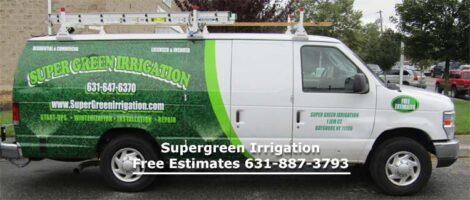Posted On:
Category:
How you can Over-water Your Lawn: The Warning Signs?
How you can Over-water Your Lawn: The Warning Signs?
Water and sunlight are the two essential elements that your grass needs to be strong and healthy. While you have no control over how much sunshine you provide, you do have control over how much and how often you water. Everything, even watering your yard, should indeed be done in moderation. Overwatering your lawn will have the opposite effect of what you want. That much water cannot and should not be used by grass plants.
Unbelievably, lawn owners frequently experience problems with overwatering. It is not only detrimental to your lawn but also counterproductive. A healthy grass should constantly sink its roots deeper into the ground and exhibit a little thirst. Your lawn’s root system will be shallow if you overwater it. Although the grass doesn’t have to struggle for its drink, there will be a lot more issues. Your lawn will be richer and more robust the deeper the root system.
What Happens If You Overwater?
Overwatering inhibits the growth of the roots and suffocates the grass. The roots cannot properly “respire” because the air pockets in the ground that should be filled with air are instead filled with water. The upper section of the plant won’t flourish if the roots aren’t left to develop and breathe. This is the major justification for why many residents decide to invest in and install smart irrigation systems.
The amount of water that ought to be supplied to your landscape depends on a variety of criteria. They consist of the rate of evaporation and transpiration, which is influenced by the kind of plant and the amount of sunlight received. Precipitation types, such as rain and snow, are important. To calculate the appropriate amount of watering, discover this information and take into account whether or not a spot is shaded. For the most part, turf grasses need 1.5 to 2 inches of water every week. This can either be used every week on one day or stretched out over two days.
Lawn Overwatering Red Flags
Maintaining a beautiful lawn shouldn’t be a hassle, but if you’re experiencing a number of signs that seem to have appeared suddenly, it can be stressful. You may be overwatering your lawn if the problems you’re experiencing resemble those on the list below.
- Weeds – While an excessively wet lawn is not the best place to produce healthy grass, it might be the best environment for weeds like silky crabgrass or yellow nutsedge. If you notice a lot of weeds establishing themselves and beginning to take over, you may be watering your garden excessively.
- Thatch – Thatch is a thick mat of partially degraded plant matter and short roots that grow on the top of the soil. Thatch buildup is caused by shallow roots and excessive watering, which stops the thatch from naturally decomposing.
- Runoff – If water is flowing off your lawn in clear streams and along the street or sidewalk, it is plainly not making its way into your soil. This is a sign that your lawn is already thoroughly saturated and may even be overwatered. In addition, your grass may be losing nutrients by having runoff water wash them away.
- Fungus – Watering the lawn too frequently keeps it damp and encourages the spread of fungi. You may be overwatering your lawn if you notice mushrooms growing there. It’s possible that irregular dark spots on your lawn are caused by anthracnose, a fungus that also affects moist grass, rather than a thirsty lawn.
- Spongey Lawn – Giving your lawn a step test is another easy technique to determine if it receives too much water. Just take a few short steps on the grass. You could probably reduce the pressure a little bit if the turf seems spongey or just soft.
- Discoloration – Water is a constant force that erodes. It can gradually alter landscapes by removing pebbles and sediment. Your soil may potentially be carried away by it. The nutrients that are keeping your grass green are carried away with the water when you have too much water, which might cause the grass to turn yellow. Too much watering needs a drainage system. In the end, the water overflows from your grass, erodes the soil, and overflows into the gutters and the surrounding environment.
- Insects – In general, lawns with a lot of moisture are great breeding grounds for pests. You might see sparse areas of grass, which are a blatant sign of an insect issue. Additionally, if you have a lot of thatch, it makes an excellent spot for insects to hide. After your grass has recovered from excessive watering and the large amounts of thatch have been removed, you can choose a pesticide based on the kind of pests you are seeing. For effective pest management, always seek professional advice.
- Worn-Out Grass – Overwatering, and drought both have the potential to make the grass wilt. This could explain why your grass is still dying even if there is no drought. Root rot brought on by excessive water can turn leaves dark and gray.
It would be beneficial if you immediately ceased overwatering after becoming aware that you were doing it. Install an effective irrigation system that may be adjusted to meet the needs of your lawn. This eliminates the need for manual watering.








